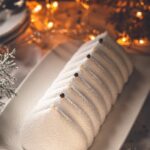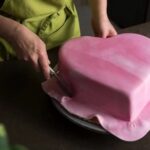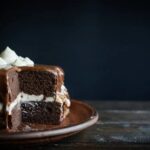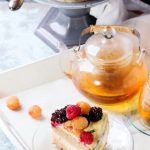Are you looking to learn how to decorate a cake using icing sugar? Decorating a cake with icing sugar is not only about making it look visually appealing, but it also enhances the taste and overall presentation of the cake. In this article, we will explore the importance of decorating a cake with icing sugar and its impact on the overall look and taste of the cake.
When it comes to decorating a cake with icing sugar, having the right tools and materials is essential. From piping bags and tips to offset spatulas and an assortment of icing sugar colors, every tool plays a crucial role in achieving beautifully decorated cakes. We will delve into the detailed list of essential tools and materials needed for decorating a cake with icing sugar.
In addition, we will provide tips and tricks for preparing the cake before decorating. This includes leveling the layers, applying a crumb coat, and chilling the cake for easy decoration. Whether you are a beginner or have some experience in cake decorating, these preparatory steps are essential for achieving professional-looking results when using icing sugar for decoration.
Tools and Materials
When it comes to decorating a cake using icing sugar, having the right tools and materials is crucial to achieving professional-looking results. Whether you’re a beginner or an experienced baker, having a well-stocked arsenal of supplies can make all the difference in creating stunning and eye-catching designs on your cakes. Here is a detailed list of essential tools and materials needed for decorating a cake with icing sugar:
- Piping Bags: Piping bags are an indispensable tool for cake decorating. They come in various sizes and can be disposable or reusable, making them versatile for different projects. Using piping bags allows for precise control when applying icing sugar onto the cake, making it easier to achieve intricate designs and patterns.
- Tips: Piping tips are attachments that go at the end of piping bags to create various shapes and designs with the icing sugar. From basic round tips to more elaborate floral tips, having a variety of tips on hand can greatly expand your decorating capabilities.
- Offset Spatula: An offset spatula is a long, flat metal tool with a narrow blade that is bent at an angle. This design makes it perfect for spreading icing sugar onto the cake evenly and with precision. It also helps in creating smooth finishes and sharp edges.
- Various Colors of Icing Sugar: Having an assortment of colors of icing sugar opens up endless possibilities for creativity and customization when it comes to cake decoration. From bold primary colors to pastels, having a range of options allows you to mix custom shades and experiment with different color combinations.
In addition to these essential tools, other materials such as stencils, edible decorations, food coloring gels, and edible glitter can also elevate your cake decoration game to new heights. Investing in quality tools and materials will not only make the process more enjoyable but also yield impressive results.
| Tools | Materials |
|---|---|
| Piping Bags | Icing Sugar |
| Tips | Stencils |
| Offset Spatula | Edible Decorations |
Preparing the Cake
Decorating a cake using icing sugar is a delightful way to elevate the look and taste of any dessert. However, before diving into the world of cake decorating, it’s crucial to ensure that the cake itself is properly prepared. Preparing the cake for decoration involves several important steps that can make a significant difference in the final result.
First and foremost, it’s essential to level the layers of the cake. This ensures that the surface of the cake is even, providing a stable foundation for decorating with icing sugar. Using a serrated knife or a cake leveler, carefully trim any domed or uneven areas to create an even surface.
Once the layers are leveled, applying a crumb coat is the next step in preparing the cake. A crumb coat is a thin layer of frosting or icing that seals in any loose crumbs on the surface of the cake.
This initial layer acts as a base for additional frosting or icing, ensuring a clean and polished final result. After applying the crumb coat, it’s important to chill the cake for at least 10-15 minutes to allow the icing to set before continuing with additional decorations.
In addition to leveling and applying a crumb coat, chilling the cake before decorating can significantly ease the process of adding icing sugar decorations. Chilled cakes are firmer and less prone to crumbling when handled during decoration. This makes it easier to achieve clean lines and precise designs when piping or spreading icing sugar onto the surface of the cake.
| Preparing Steps | Description |
|---|---|
| Leveling Layers | Use knife or leveler to even out surface |
| Applying Crumb Coat | Thin layer of frosting/icing to seal in crumbs |
| Chilling Cake | Aid in setting icing/coating for easier decoration |
Basic Techniques
When it comes to decorating a cake using icing sugar, mastering the basic techniques is essential for creating beautiful and professional-looking designs. Whether you’re a beginner or an experienced baker looking to brush up on your skills, understanding the fundamental decorating techniques will set the foundation for more advanced designs. In this section, we will explore step-by-step instructions for piping borders, creating rosettes, and writing messages with icing sugar.
Piping Borders
One of the most common and versatile decorating techniques using icing sugar is piping borders around the edges of the cake. To begin, fit a piping bag with a round tip and fill it with your desired color of icing sugar.
Hold the piping bag at a 45-degree angle to the edge of the cake and gently squeeze as you move the bag in a continuous motion to create a smooth border. Practice consistency in pressure for even lines, and experiment with different tip shapes for diverse border designs.
Creating Rosettes
Rosettes are elegant floral-inspired designs that add a touch of sophistication to any cake. To create rosettes with icing sugar, use a star-shaped piping tip and hold the piping bag perpendicular to the surface of the cake.
Start at the center of where you want the rosette to be and pipe outward in a circular motion, overlapping each layer slightly until you form a beautiful rosette shape. Adjusting the pressure on the piping bag can create variations in size and texture for unique rosette designs.
Writing Messages
Adding personalized messages to cakes is a popular way to customize them for special occasions. When using icing sugar to write messages, start by practicing on parchment paper to get comfortable with lettering styles and sizes. Then, transfer your chosen message onto the cake by lightly sketching it out with toothpicks before piping over it with icing sugar. Take your time and use steady hand movements when writing messages to ensure clarity and precision in your lettering.
By mastering these basic decorating techniques using icing sugar, you’ll have a strong foundation for creating beautifully decorated cakes that are sure to impress any crowd. Remember that practice makes perfect when it comes to cake decorating, so don’t be afraid to experiment with different designs and colors until you find your unique style.
Advanced Techniques
Once you have mastered the basic techniques of decorating a cake with icing sugar, it’s time to explore more advanced and intricate techniques to take your cake decoration skills to the next level. One popular advanced technique is creating intricate floral designs using icing sugar. With the right piping tips and a steady hand, you can create stunning floral patterns such as roses, peonies, and daisies to adorn your cake.
To create these floral designs, it’s essential to use the right piping tips. Look for petal-shaped or leaf-shaped tips that will help you create realistic-looking flowers. Practice piping individual petals and leaves on a flat surface before attempting to decorate your cake. This will help you perfect your technique and gain confidence in creating intricate floral designs.
Another advanced technique for decorating a cake with icing sugar is using different piping tips for various designs. Experiment with different tip shapes and sizes to create unique patterns, textures, and effects on your cake. For example, star-shaped tips can be used to create a textured look for borders or covering the entire surface of the cake.
Writing messages or adding intricate details can be achieved using small round tips. The possibilities are endless when it comes to using different piping tips for decorating a cake with icing sugar.
In addition to these advanced techniques, it’s important to remember that practice makes perfect when it comes to mastering the art of decorating a cake with icing sugar. Don’t be afraid to experiment with new techniques and designs, and always remember that mistakes can be part of the learning process. With dedication and patience, you can elevate your cake decoration skills to create stunning edible works of art.
Adding Color and Texture
When it comes to decorating a cake using icing sugar, adding color and texture can take your creations to the next level. Whether you’re aiming for a vibrant and colorful design or a more subtle and elegant look, mastering the art of mixing and blending colors, as well as creating different textures, is essential. Here are some tips on how to elevate your cake decorations with the use of icing sugar.
One of the most important aspects of adding color to icing sugar is achieving the right shade or tone for your design. To mix and blend colors effectively, start with a small amount of food coloring gel and gradually add more until you reach the desired hue.
Keep in mind that some colors may intensify over time, so it’s always best to start with less and add more as needed. Additionally, consider using a color wheel as a guide to create harmonious color combinations that will enhance the overall visual appeal of your cake decoration.
In addition to color, texture can also play a significant role in enhancing the appearance of your icing sugar decorations. Creating different textures can add depth and dimension to your designs, making them visually appealing. For example, you can achieve smooth and glossy surfaces by adding corn syrup or glucose to your icing sugar mixture. On the other hand, incorporating edible lustre dust or sanding sugar can create shimmering and textured effects that will make your decorations stand out.
Ultimately, mastering the art of adding color and texture to your icing sugar decorations requires practice and experimentation. Don’t be afraid to play around with different techniques and combinations to discover what works best for your designs. With patience and creativity, you’ll be able to create visually stunning cake decorations that are sure to impress.
Troubleshooting
While decorating a cake with icing sugar can be a delightful and creative process, it’s not without its challenges. Common issues and problems may arise during the decorating process that can affect the overall look of the cake. Two common issues that decorators often encounter are air bubbles in the icing and uneven piping. However, with some troubleshooting techniques, these issues can be easily fixed to achieve a beautifully decorated cake.
Air bubbles in the icing can create an uneven and bumpy surface on the cake, which is not ideal for a smooth and polished finish. To prevent air bubbles from forming in the icing, it’s important to properly mix and knead the icing before filling the piping bag.
Additionally, gently tapping the filled piping bag on a flat surface can help release any trapped air bubbles. If air bubbles still appear while piping the icing onto the cake, using a toothpick to carefully puncture and release them can help create a smoother finish.
Uneven piping is another issue that can occur when decorating a cake with icing sugar. This problem often arises when there is inconsistent pressure applied to the piping bag or when using an unfamiliar piping tip.
To troubleshoot uneven piping, practice applying even pressure while practicing different piping techniques on parchment paper or wax paper before decorating the actual cake. Using guide lines or templates can also help maintain consistent spacing and even lines when creating intricate designs on the cake.
By addressing common issues such as air bubbles in the icing and uneven piping with these troubleshooting techniques, decorators can ensure a beautifully decorated cake using icing sugar. Practicing these troubleshooting methods will not only yield better results but also enhance overall confidence in mastering the art of cake decoration.
Finishing Touches
Adding Edible Decorations
In addition to decorating a cake using icing sugar, adding edible decorations can take the presentation to the next level. Edible decorations can include fondant shapes, chocolate curls, fresh fruits, or even edible flowers. These elements not only add visual appeal but also bring different flavors and textures to the overall cake experience. When adding edible decorations, it’s essential to consider the theme or occasion and ensure that the decorations complement the icing sugar design.
Using Sprinkles
Sprinkles are a simple yet effective way to add color and texture to a decorated cake. They come in various shapes, sizes, and colors, allowing for endless creative possibilities. From classic rainbow sprinkles to metallic dragees or themed sprinkles for specific occasions, adding sprinkles can instantly elevate the look of a cake. When using sprinkles, it’s important to apply them strategically and consider balance and symmetry in their placement for a professional finish.
Finishing the Edges
Once the main design elements of the cake have been completed using icing sugar, attention should be paid to finishing the edges of the cake for a polished look. Using an offset spatula or bench scraper, smooth out any uneven edges along the sides of the cake and create clean lines for a professional finish. This step adds refinement to the overall presentation of the decorated cake and showcases attention to detail.
Incorporating these final touches into decorating a cake with icing sugar can truly transform a simple dessert into an eye-catching centerpiece for any celebration. By carefully considering edible decorations, sprinkles, and finishing edges with precision and care, bakers can elevate their cake decorating skills and leave a lasting impression on those who enjoy their delicious creations.
Conclusion
In conclusion, decorating a cake using icing sugar is not only a delightful way to enhance the visual appeal of a dessert but also adds a layer of flavor and texture that elevates the overall taste experience. The tools and materials required for this endeavor are essential for achieving professional-looking results. Preparing the cake properly before decorating is crucial, as it sets the foundation for a smooth and seamless decorating process.
Mastering basic and advanced techniques, along with experimenting with color and texture, allows for endless possibilities in creating unique and visually stunning cakes. Despite potential troubleshooting issues that may arise, there are solutions to rectify these challenges. Lastly, adding finishing touches such as edible decorations or sprinkles adds that extra touch of pizzazz to the final product.
In essence, mastering the art of decorating a cake with icing sugar takes practice and experimentation. With dedication and patience, anyone can create beautifully decorated cakes that not only look impressive but also taste delicious. So, roll up your sleeves, gather your tools, and start experimenting with different techniques to create your own masterpiece.
Frequently Asked Questions
How Do I Use Icing Sugar to Decorate a Cake?
Icing sugar can be used to decorate a cake by sifting it over the top using a fine-mesh sieve. This creates a light, even dusting of sugar and adds a decorative touch to the cake.
How Do You Keep Icing Sugar on Top of a Cake?
To keep icing sugar on top of a cake, make sure the surface of the cake is dry and not too oily. If necessary, gently pat the surface with a paper towel to absorb any excess moisture before sifting the icing sugar on top.
How Do You Sprinkle Powdered Sugar on a Cake?
Sprinkling powdered sugar on a cake can be done by transferring the sugar to a shaker with small holes or using a fine-mesh sieve. Hold the shaker or sieve over the cake and lightly tap it to release the powdered sugar evenly onto the surface.

Welcome to my blog about home and family. This blog is a place where I will share my thoughts, ideas, and experiences related to these important topics. I am a stay-at-home mom with two young children. I hope you enjoy reading it! and may find some helpful tips and ideas that will make your home and family life even better!





